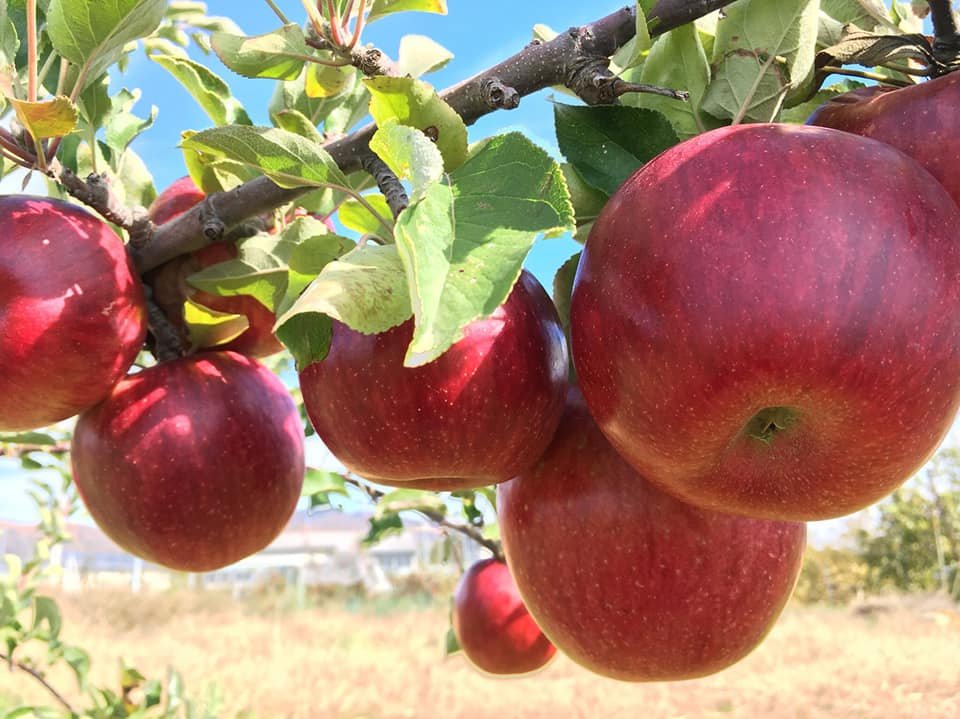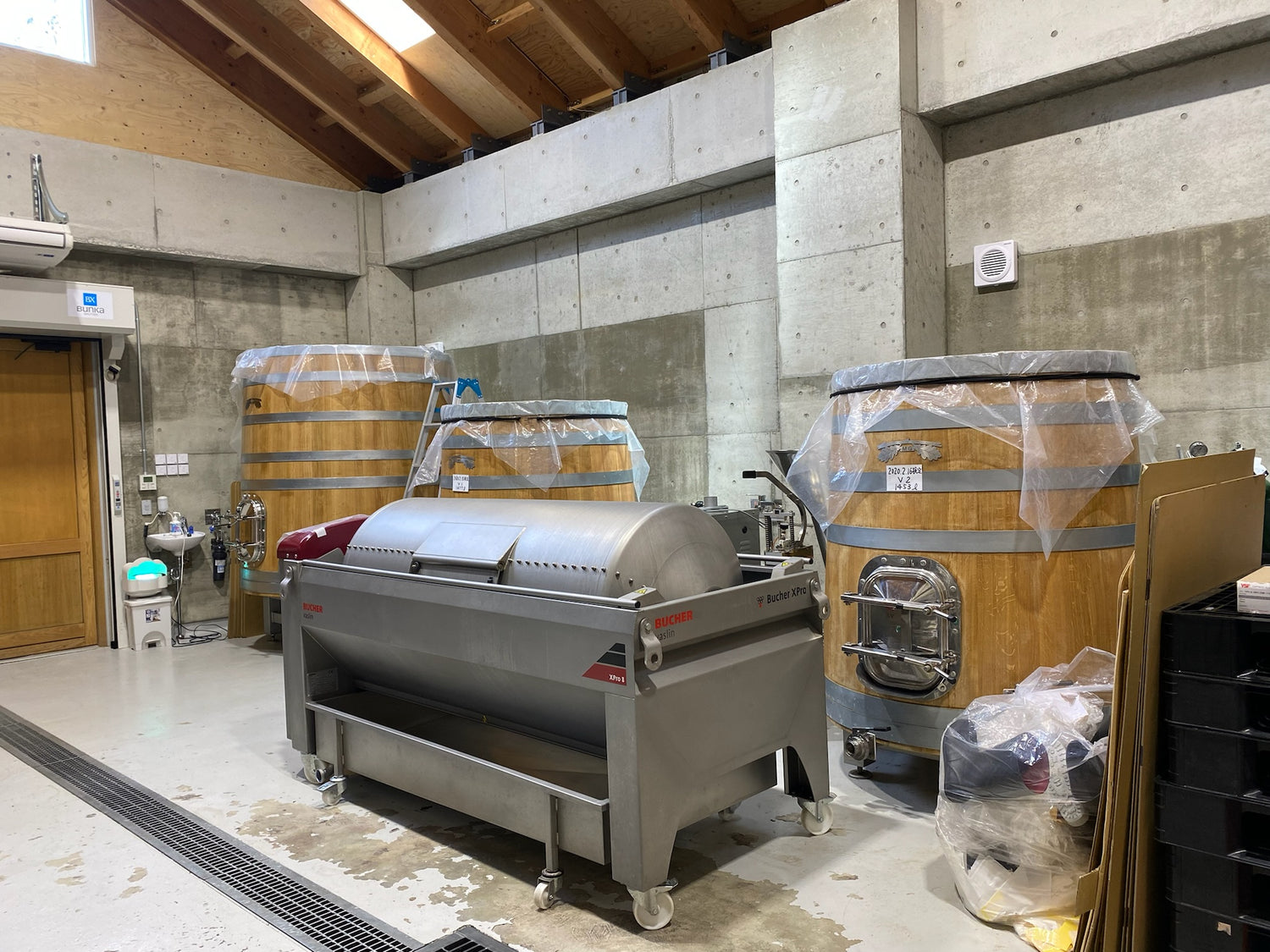Les Vins Vivants
Tomi, Nagano
People
LES VINS VIVANTS is a cidery and also a winery run by Tomoko and Takahiro Ogino in Tomi, Nagano. Tomoko is mainly responsible for apple and grape cultivation, and Takahiro for cider and wine production.

Takahiro was born in Yamanashi, which is famous for Japanese wine, and grew up in a family home with vineyards for wine right in front of there and a winery just a few seconds walk away. His parents enjoyed drinking, and perhaps because he spent his childhood in such an environment, he naturally came to like drinking and decided that he wanted to go into that industry. It was at a restaurant in Tokyo where he worked that he met Tomoko, originally as a colleague. While discussing the depth of wine with her at the restaurant, he became fascinated with winemaking. Although he had no previous experience in farming, he felt that he wanted to make wine himself and began to learn.
After resigning from the restaurant, Takahiro learned vinification for six years at Grace Wine, a winery in his home prefecture of Yamanashi, which was the catalyst for the spread of the name “Koshu wine” around the world. He then went to France to gain experience with natural wine producers in Beaujolais and Alsace. He then moved to Tomi in Nagano with Tomoko, where they are currently based, with a view to establishing their own cidery and winery. After moving there, she also studied vinification and apple cultivation at JA Shinshu Ueda Farm for two years. They then went on to establish LES VINS VIVANTS in 2019.
They started making natural ciders after drinking a natural cider made by La Cidrerie du Golfe in the process of meeting many French producers. “Rich, deep, and complex, with a delicious flavour of apple. We were shocked to find such a delicious cider. We then thought that we wanted to grow apples with our own hands and produce ciders of the same quality in Japan. No, we thought we should” they said.
In Japan, wine is still preferred over ciders. However, they want to break down preconceptions that wine is expensive and cider is cheap, and even the practice of categorising them as wine or cider. The ciders produced by these two are not imitations of ciders produced in Europe or any other countries but are unique works of art made with apples from Nagano, a famous apple-growing region.
Vineyard

Located in the eastern part of Nagano, Tomi is a place of rich nature, with more than half of its area covered by mountains and forests, a quarter by fields, and the Chikuma River flowing leisurely through the centre of the city. When they first visited the site where the cidery and winery are currently located, they fell in love at first sight with the magnificent view of the Yatsugatake Mountains and the Northern Alps from the southern slopes, with Mount Asama towering on the opposite side. At that moment, they thought, "we were ready to live here for the rest of our life".

Due to its cool climate, Tomi is an ideal place to grow apples without using artificial pesticides such as insecticides and fungicides as much as possible. In such a location, a 0.8 ha apple orchard is set up where apples are grown with reduced use of pesticides. In 2019, a new field was cultivated from scratch, and they are also taking on the challenge of growing apples completely pesticide-free.
The local varieties grown in these fields include the delicious and well-balanced Sun Fuji and Shinano Gold, as well as Kougyoku(Jonathan), which is native to the USA. Sun Fuji is used to add richness and depth to the cider, Shinano Gold to add sweetness and complexity, and Kougyoku to add acidity.

In apple cultivation, the trees are purposely trained weakly. The weaker the tree's growth, the more threatened it feels, the more it encourages fertilisation and the more ripe and tasty the fruit will be. This is why the trees are trained to grow weakly, by deliberately letting the branches droop downwards.
Winemaking
The name of the cidery and winery, LES VINS VIVANS, comes from the French words VINS, meaning “wine”, and VIVANTS, meaning “living”. As the name suggests, in cider making, they are committed to producing ciders naturally, so as to utilise the natural power and potential of the apples. For this reason, the cider is fermented using only wild yeast and no additives are added.

However, apples, the raw material for ciders, have a lower sugar content and higher acidity than grapes, making it difficult to ferment with wild yeasts and secondary fermentation. Nevertheless, in order to produce a well-balanced and tasty cider, Takahiro uses a traditional, time-honoured method called “Méthode Ancestrale”, in which the cider is bottled at the final stage of primary fermentation and fermentation is ended there. In order to enhance the character of the apples, which reflect the characteristics of the harvest year, no sulphites are added during the process, from preparation to bottling, and the brewery is temperature-controlled to avoid the risk of contamination by bacteria and is fermented by wild yeasts only. Because of this careful making and maturation, the cider does not have to be drunk immediately after opening, but can be enjoyed as it opens up from day one to day two, from day two to day three, and as the flavours change.

The construction of the cidery and winery also shows a commitment to sustainability. Insulation from Denmark keeps the temperature below 18°C without electric air conditioning, even in the middle of summer. That is, needless to say, the perfect environment for apples and natural ciders.
Speaking of their ciders, one cannot help but mention the fascination of their labels which are designed by illustrator Yunico Uchiyama. It all started when Tomoko was attracted to his illustrations. Tomoko describes the ciders they produce as “innocent, young and like a teenage girl”. This expression also reflects their desire for the next generation, who have no preconceptions about ciders or wine, to be able to hold the ciders in their hands. These thoughts are beautifully expressed in the illustrated labels drawn by him. In fact, Tomoko told him that she wanted to name the cider after a colour, and the names of their ciders “Mizuiro”, “Ao” and “Hakuro” were colours that came to his mind when he tasted the cider and drew the illustrations. He is also the godparent of their ciders. The labels and names created through such interaction between Tomoko and Yunico can be the embodiment of “Japanese KAWAII”.
We hope that people from all over the world will encounter LES VINS VIVANTS cider through various points of contact, such as Tomoko and Takahiro's past, their passion for apples and cider making, and KAWAII in Japan, which we have introduced here.
Find out their wines
Cider Mizuiro 2022
€24,00
Bailey A HAKKOUTAI 2024
€36,00







